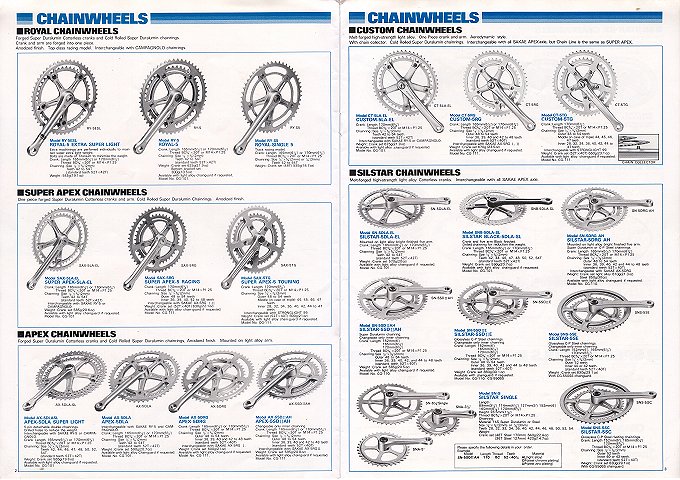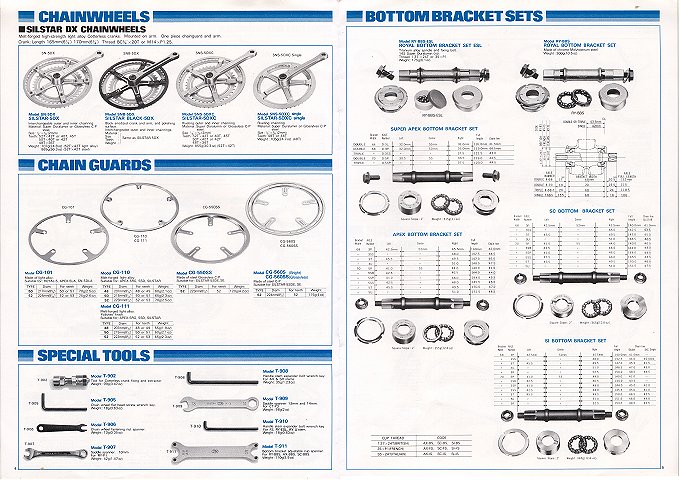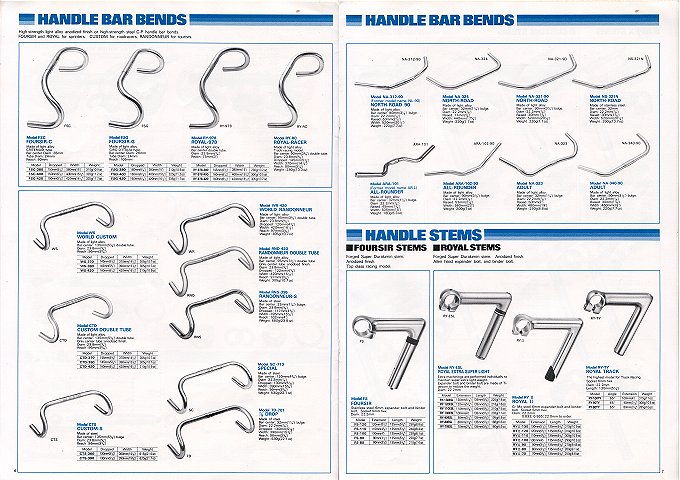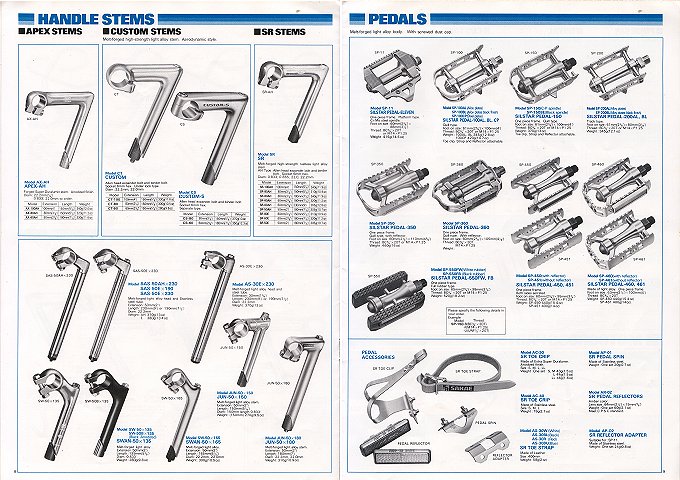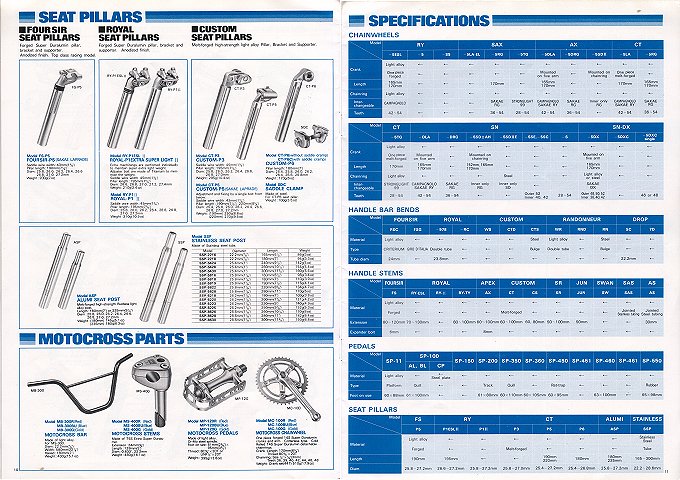|
As for the seat post, I really recommend ESL.
The weight was 210 grams; it was the lightest model as a Campagnolo type.
However, the catalog showed that the weight of Four-sir was 200 grams; it was surprisingly light!
The specification table was on the right page.
Here is large image of left side.
Here is large image of rifht side.
The products of Sakae were never bad. Or we can say that those were rather ambitious.
However, those were classified into the second or the third class model at the market.
Even if we dare to ignore Simano and Suntour, there were still several exclusive makers such as Sugino (chain-wheel), Nitto (handlebar and stem), Mikashima and Kyokuto (pedal).
Sakae tried to compete with them directly.
Sakae was doing well for dealing with mass-production bicycle makers and foreign country.
However, Sakae's approach to end-user was not enough.
Sakae must have had interest in so-called "business to business" instead of "business to customer".
|

